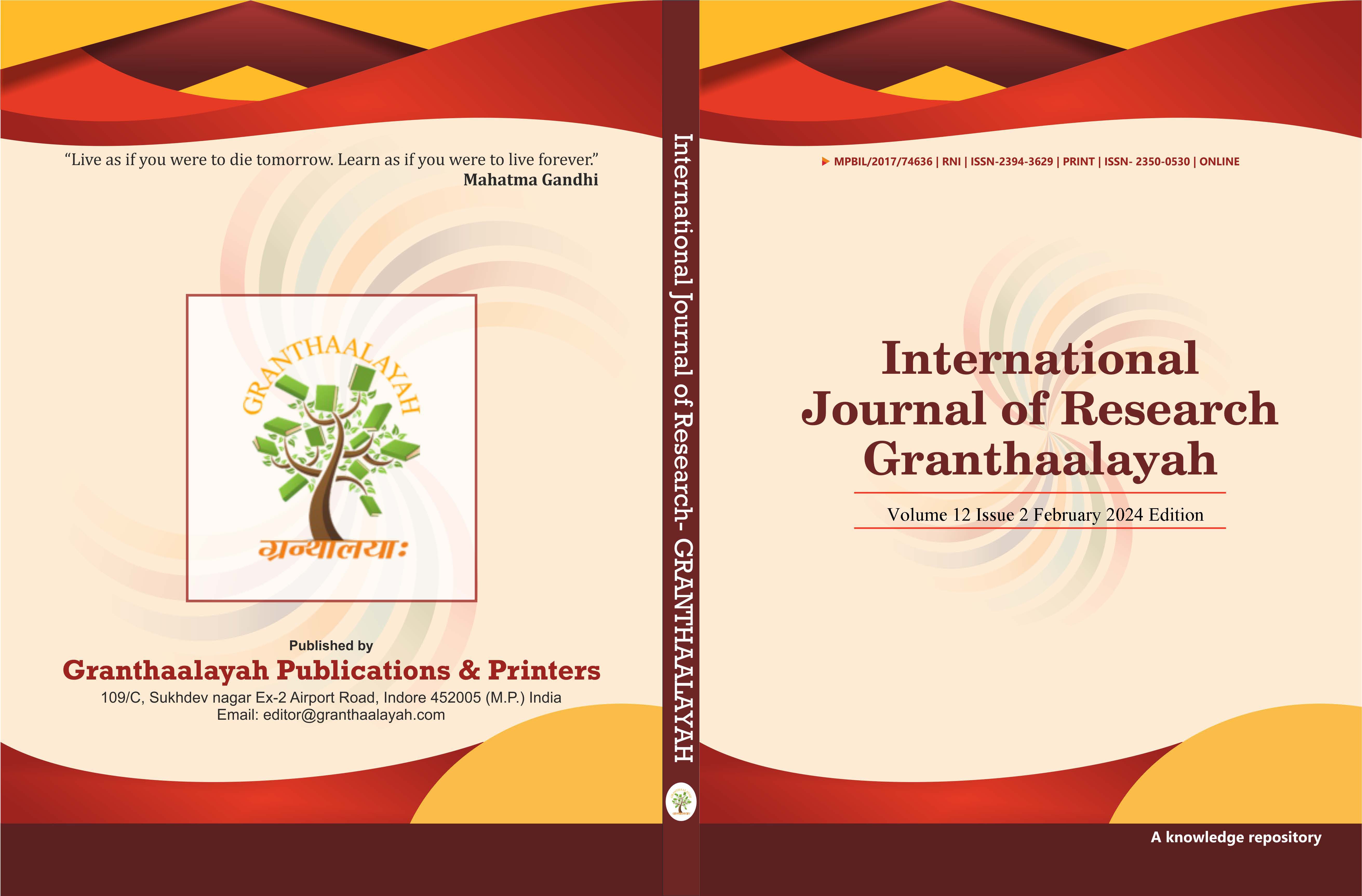BUILDING A RESPONSIVE AND SCALABLE REAL-TIME CHAT APPLICATION WITH MODERN TECH STACK
DOI:
https://doi.org/10.29121/granthaalayah.v12.i2.2024.6116Keywords:
Real-Time, Application, Communication, Low-Latency Interactions, High-Performance, Modern Tech StackAbstract [English]
The Real-Time Chat Application presents an advanced, cross-platform communication system designed to deliver seamless, low-latency interactions for users across various devices. Leveraging the high-performance capabilities of Golang for the backend, the system capitalizes on the language’s inherent concurrency strengths to manage multiple simultaneous connections efficiently. Communication between client and server is streamlined through gRPC with bidirectional streaming, ensuring scalable and resilient message delivery.
The frontend is developed using Flutter, enabling a visually engaging, consistent, and responsive user experience across Android, iOS, and web platforms. This architecture not only enhances user accessibility but also simplifies maintenance and future scalability.
To further elevate performance and user engagement, the system can integrate WebSocket fallback support, end-to-end encryption for secure messaging, and optional AI-powered moderation and suggestion features. These enhancements position the application as a robust, real-time communication solution suitable for both enterprise and personal use cases.
This project demonstrates the synergistic power of modern technologies—Golang, gRPC, and Flutter—in building next-generation, real-time systems that are both efficient and user-centric.
Downloads
References
A. Smith et al., "Real-Time Communication Technologies," Journal of Internet Applications, vol. 12, no. 3, 2020.
Google Developers, “Flutter: Beautiful native apps in record time,” [Online]. Available: https://flutter.dev
I. Kennedy, "Why Go is Ideal for Scalable Backend Systems," Software Engineering Today, vol. 9, 2021.
M. Petrov, "Introduction to gRPC: Efficient Communication in Microservices," IEEE Software, vol. 38, no. 6, 2021.
J. Liu, "Designing User-Centric Messaging Applications," Human-Computer Interaction Review, vol. 7, no. 2, 2022.
N. Suresh, "Privacy and Security in Mobile Communication," Cybersecurity Journal, vol. 5, 2020.
GitHub Docs, "Open Source Development: Benefits and Collaboration," [Online]. Available: https://docs.github.com
K. Ramesh, "Modern Communication Platforms: Challenges and Solutions," International Conference on Mobile Computing, 2023.
Google Developers. (2024). Flutter Documentation. Retrieved from https://flutter.dev/docs
Golang Documentation. (2024). The Go Programming Language Specification. Retrieved from https://golang.org/doc/
Google. (2024). gRPC - A high-performance, open-source RPC framework. Retrieved from https://grpc.io/docs/
Freeman, E., & Bates, B. (2020). Head First Design Patterns: A Brain-Friendly Guide. O'Reilly Media.
Tanenbaum, A. S., & Wetherall, D. J. (2020). Computer Networks (5th ed.). Pearson.
Gamma, E., Helm, R., Johnson, R., & Vlissides, J. (1994). Design Patterns: Elements of Reusable Object-Oriented Software. Addison-Wesley.
RFC 6455. (2011). The WebSocket Protocol. Internet Engineering Task Force (IETF). Retrieved from https://datatracker.ietf.org/doc/html/rfc6455
W3C. (2024). WebRTC 1.0: Real-Time Communication Between Browsers. Retrieved from https://www.w3.org/TR/webrtc/
Firebase Documentation. (2024). Using Firebase for Real-Time Chat Applications. Retrieved from https://firebase.google.com/docs/firestore
Microsoft Azure. (2024). Azure Web Services for Scalable Chat Applications. Retrieved from https://azure.microsoft.com/en-us/products/communication-services/
Published
How to Cite
Issue
Section
License
Copyright (c) 2024 Apoorva Jha, Puja, Sumit Pandey, Mohan Tiwari, Arshi Fariya

This work is licensed under a Creative Commons Attribution 4.0 International License.
With the licence CC-BY, authors retain the copyright, allowing anyone to download, reuse, re-print, modify, distribute, and/or copy their contribution. The work must be properly attributed to its author.
It is not necessary to ask for further permission from the author or journal board.
This journal provides immediate open access to its content on the principle that making research freely available to the public supports a greater global exchange of knowledge.






























